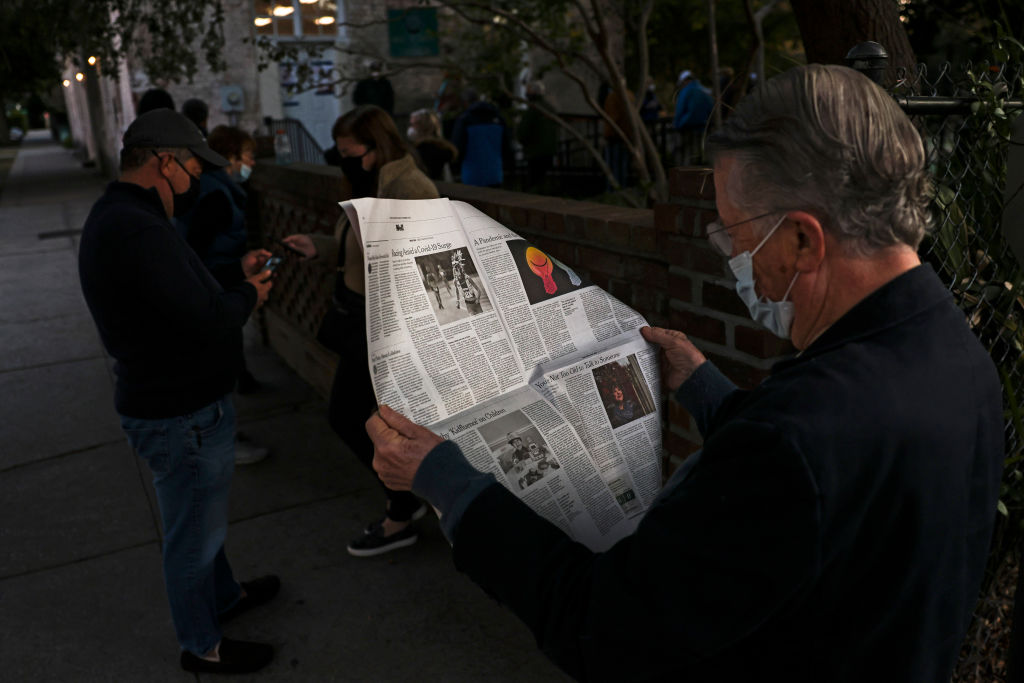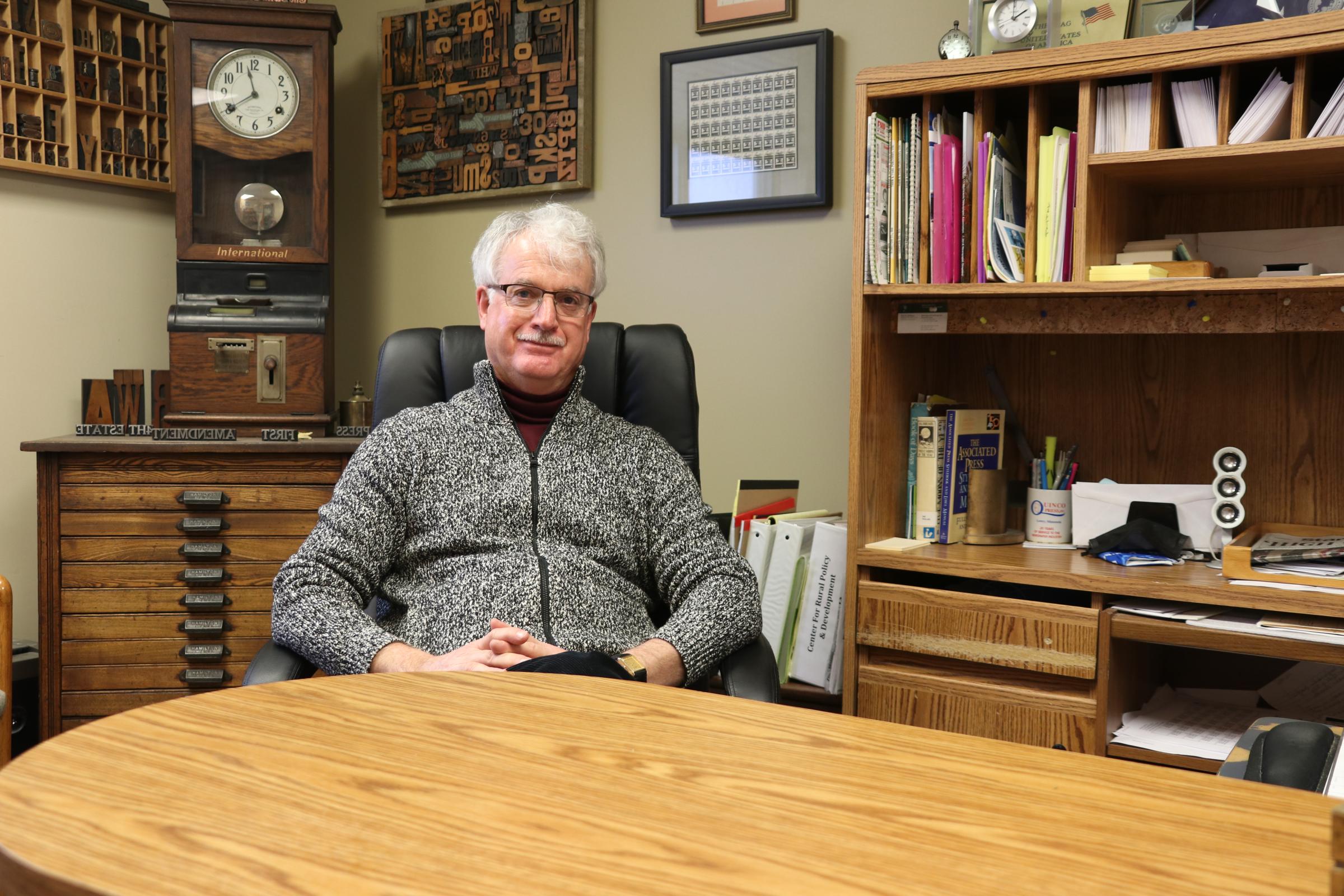
Keeping up with the torrent of news over the last year has been overwhelming for all Americans. But it’s an especially difficult challenge for local newspaper editors like Reed Anfinson, who not only owns and publishes Swift County, Minn.’s Monitor-News, but writes nearly every news story it publishes, too. Anfinson, who also owns two other papers in nearby counties, has worked virtually seven days a week since the start of the COVID-19 outbreak, including through a battle with the virus himself. For all his hustle, he still wishes he had time to write more about the people whose lives have been disrupted by COVID-19—or the money to hire reporters. While there’s more news to fill the pages of Anfinson’s papers this year, his publications have had to shrink to survive as cash-strapped businesses have pulled ads, forcing the papers to shed pages and cut staff positions and hours. Anfinson says more cost-saving measures will be necessary, but it will be hard to figure out what to do next. “We are so lean, we don’t have anywhere to cut,” he says.
Local news outlets like the Monitor-News were in rough shape even before the pandemic. More than 2,000 U.S. newspapers have closed in the last 15 years, and 1,800 communities that had a local news outlet in 2004 didn’t have one at the end of 2019, according to research from the Hussman School of Journalism and Media at the University of North Carolina at Chapel Hill. Today, more than 200 counties do not have a newspaper or other source of “credible and comprehensive” information, and half have only one newspaper. COVID-19 has only hastened local outlets’ demise, costing communities what could otherwise be valuable sources of local information about viral spread, vaccinations and more. Among six chains that own hundreds of local papers, ad revenue dropped 42% during a quarter of 2020 compared to the year before, and circulation revenue dropped 8%, according to a Pew Research Center analysis. More than 60 local newsrooms shuttered over the course of 2020, while others have endured layoffs, furloughs and other cutbacks, according to journalism research organization Poynter.
As local news outlets disappear, they leave behind an information vacuum that makes way for the spread of misinformation on social media and through “pink slime” media platforms, which appear to be organic local news but instead feature mostly algorithmically-generated articles repurposed from other outlets and public data sets. The consequences of the country’s local news drought have become especially apparent during the pandemic. Over the last year, political polarization and misinformation has caused some people to doubt even basic facts of the pandemic, from the accuracy of death rates to whether measures like face masks can slow the virus’ spread. In some communities, where many residents have pushed back on scientifically-proven measures like mask-wearing, local reporters have been one of the only bulwarks for the truth. Anfinson, for instance, has been hard at work dispelling rumors about the virus—including falsehoods about improper hospital use of COVID-19 funds—and taken on critics of social distancing and state mask mandates. But his efforts have cost him.
“I know that my constant writing about that has lost me some subscribers and businesses at the newspapers,” Anfinson says. Nevertheless, he has pushed on with his coverage, with two key goals in mind: keeping his communities safe, and helping them recover from the pandemic’s economic devastation. If he fails, the towns his papers serve could be left without any local news coverage at all. “We know there’s nothing that replaces us,” Anfinson says. “In small town America, the newspaper is the only source of information.”

The pandemic has also threatened some publications that were on sound footing at the beginning of 2020, like the weekly North Coast Journal in Humboldt County, Calif., where the newsroom shrunk from five employees to one full-time and one part-time employee last year after advertisers pulled away or closed. “There was a point early on where we didn’t know—there was major doubt about whether we would survive this as a company,” says Journal News Editor Thadeus Greenson. But the Journal pulled through after receiving a Paycheck Protection Program loan and rejiggering its advertising strategy. It was able to bring back three editorial staff members, and has offered invaluable reporting through the pandemic, publishing stories on food insecurity in the county and covering otherwise under-reported communities, like local indigenous tribes.
In the COVID-19 era, the consequences of the local news crisis is most obvious when looking at the editorial resources available in communities where small newsrooms have survived. As the virus first struck the U.S. last winter, Echo Day, managing editor of the Leader in Covington, Tenn., for example, built a digital hub for outbreak information. There, readers could find out about school and festival closures, see where to pick up donated food, and read stories from the local community, like one about a woman who died of COVID-19 after resisting masking and social distancing guidance. Without the Leader, those tools and coverage may have never existed. “This was a project I felt strongly about doing, giving people this information,” says Day. “Because they wouldn’t get it otherwise.”
Day and the Leader have faced challenges brought on by the pandemic, too. At the paper’s worst moment, four employees were quarantined with COVID-19. At one point, only her and another staff member were on the editorial team. Keeping up with pandemic news, combined with the regular news cycle, was just “overwhelming,” says Day. “There was so much information, and so much change,” she adds.
The news cycle didn’t stop when Day herself contracted COVID-19 in October. Despite enduring headaches, a fever and shortness of breath, Day kept the paper going by working from home. She didn’t want to leave it all to one colleague, and she feared that the public wouldn’t otherwise get the information they needed.
“There’s no other newspaper covering us. It’s just us, and it’s up to us and to be here and to cover all of the events that take place here—not just the big things that would catch the attention of the Memphis media,” says Day. “So I feel that responsibility to people.”
More Must-Reads from TIME
- Why Trump’s Message Worked on Latino Men
- What Trump’s Win Could Mean for Housing
- The 100 Must-Read Books of 2024
- Sleep Doctors Share the 1 Tip That’s Changed Their Lives
- Column: Let’s Bring Back Romance
- What It’s Like to Have Long COVID As a Kid
- FX’s Say Nothing Is the Must-Watch Political Thriller of 2024
- Merle Bombardieri Is Helping People Make the Baby Decision
Contact us at letters@time.com